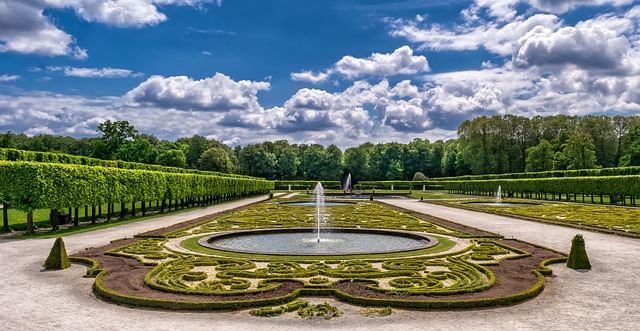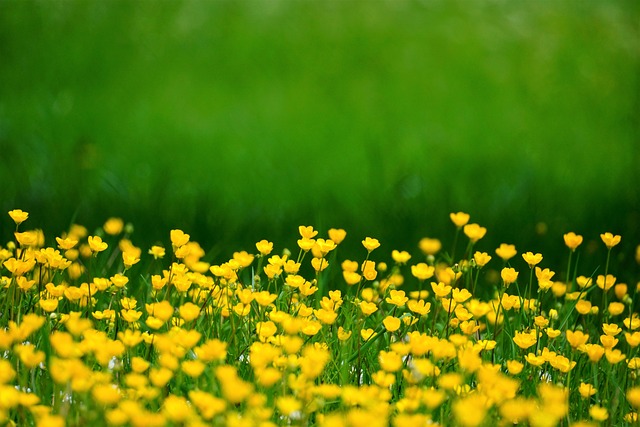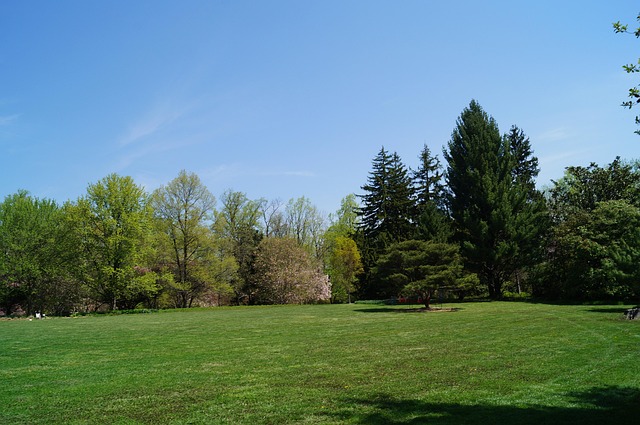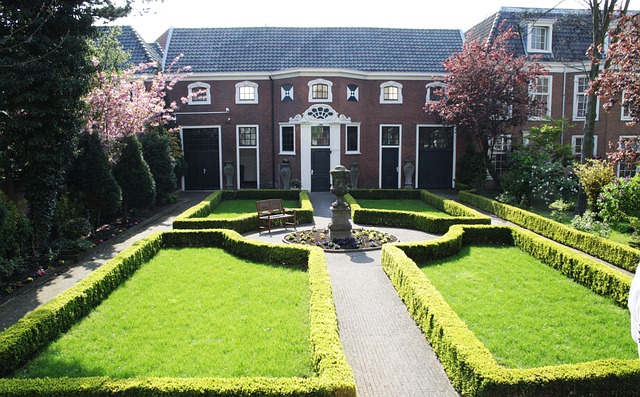Creating a pet-friendly outdoor space means prioritizing your furry companions' safety and well-being through non-toxic plant choices, durable landscaping materials, and incorporating features that cater to their natural instincts. By selecting pet-safe plants like petunias and marigolds, using sturdy pathways and weather-resistant fencing, and providing dedicated spaces for rest, play, and shade, you can design a vibrant, functional yard where both you and your pets can thrive. This approach ensures a safe yard for pets while maintaining an aesthetically pleasing outdoor environment.
Creating a safe yard for your furry friends is not just about aesthetic appeal; it’s about ensuring a healthy and happy outdoor haven. In this guide, we explore the art of pet-friendly landscaping, focusing on non-toxic plants that keep your pets safe while enhancing your garden’s beauty. From understanding your pet’s needs to designing durable spaces, discover how to cultivate a vibrant, pet-safe yard where they can play and thrive. Learn about common toxic plants to avoid and embrace the benefits of incorporating pet-friendly plant options into your landscape design.
- Understanding Your Pet's Needs for a Safe Outdoor Haven
- Common Toxic Plants to Avoid in Landscaping
- Exploring Pet-Friendly Plant Options and Their Benefits
- Designing Durable and Inviting Pet-Safe Yard Spaces
- Tips for Maintaining a Healthy and Happy Pet-Friendly Landscape
Understanding Your Pet's Needs for a Safe Outdoor Haven

Creating a pet-friendly outdoor space goes beyond just having a beautiful garden; it’s about ensuring a safe haven for your furry companions. When designing a yard or garden, consider what makes an environment safe and enjoyable for your pets. For instance, avoid using toxic plants that could cause distressing symptoms if chewed or ingested, as many common landscaping options can be harmful to animals. Opt instead for non-toxic plant varieties that are pet-safe and durable enough to withstand curious sniffs and bites.
A pet-friendly yard design should incorporate features that cater to your pet’s natural instincts and behaviors. This might include providing shade during hot summer days, ample space for running and playing, and even sensory elements like different textures and scents. By understanding your pet’s needs and incorporating these considerations into your landscaping choices, you can create a vibrant outdoor space where both you and your pets can thrive and enjoy quality time together.
Common Toxic Plants to Avoid in Landscaping

Many common houseplants and garden flora can be harmful to pets if ingested. When designing a safe yard for pets or creating a pet-friendly outdoor space, it’s essential to avoid plants known for their toxicity. Pet owners should consider replacing potentially dangerous options with non-toxic plants for pets instead. This shift towards pet-safe garden design ensures that furry friends can enjoy the outdoors without putting their health at risk.
Some of the most common toxic plants to avoid in landscaping include lilies, dieffenbachia, and azaleas, which can cause severe issues for dogs and cats. Additionally, certain varieties of tulips, daffodils, and roses may lead to irritation or even poisoning. By opting for durable landscaping solutions featuring non-toxic plants for pets like petunias, marigolds, and black-eyed Susans, you can create a beautiful and pet-friendly yard design that everyone can enjoy safely.
Exploring Pet-Friendly Plant Options and Their Benefits

Creating a safe and welcoming outdoor space for your furry friends doesn’t have to mean sacrificing beauty and diversity. Exploring pet-friendly landscaping options opens up a world of possibilities for designing a yard that’s both functional and aesthetically pleasing. Incorporating non-toxic plants for pets into your garden or yard not only ensures peace of mind but also contributes to a durable and thriving outdoor environment.
A pet-safe garden design considers the well-being of your animals, preventing any accidental ingestion of harmful substances. By selecting suitable plant varieties, you can cultivate a vibrant and engaging space where your pets can safely play, explore, and enjoy the outdoors. Whether it’s a dog-friendly landscape solution or a yard designed with all pets in mind, these choices allow for a harmonious blend of natural beauty and pet safety, fostering a healthy and joyful outdoor lifestyle.
Designing Durable and Inviting Pet-Safe Yard Spaces

When designing a durable and inviting pet-safe yard space, it’s crucial to incorporate both functional elements and aesthetically pleasing non-toxic plants that cater to your pet’s well-being. Pet-friendly landscaping involves selecting materials and vegetation that are not only safe for your furry companions but also stand the test of time. Opting for sturdy pathways, robust fencing, and weather-resistant features ensures a long-lasting outdoor area where pets can play and roam freely without any hazards.
A well-planned pet-safe garden design should balance form and function. Incorporate a variety of non-toxic plants that offer sensory stimulation for your pets, such as fragrant herbs or visually appealing blooms. Consider creating dedicated areas for different activities—a cozy spot for resting, an open space for play, and perhaps a shaded area for hot summer days. By combining durable landscaping techniques with thoughtful pet-friendly plant choices, you can create a beautiful and secure yard where both you and your pets will enjoy spending quality time together.
Tips for Maintaining a Healthy and Happy Pet-Friendly Landscape

Creating a pet-friendly landscape is not just about aesthetics; it’s about ensuring your yard is safe and healthy for your furry friends. When designing or revamping your outdoor space, choose plants that are non-toxic to pets, as many common garden varieties can be harmful if ingested. Researching and selecting pet-safe plants is a crucial step in developing a durable landscape that caters to both beauty and your pet’s well-being.
Consider the following tips for maintaining a happy and healthy pet-friendly yard: opt for native plant species, which are often less toxic and easier on your pet’s digestive system; incorporate plenty of open spaces, allowing for unobstructed movement and play; avoid using chemical fertilizers or pesticides that could contaminate the area; and regularly trim plants to prevent them from becoming tangled or sharp, posing potential hazards. With these simple practices, you can create a beautiful, inviting outdoor space that your pets will love, free from any toxic risks.
Creating a pet-friendly landscape is not just about aesthetics; it’s about ensuring your furry friends can safely enjoy the outdoors. By understanding your pet’s needs and selecting non-toxic plants, you can design a durable yard space that is both inviting and secure. With these considerations in mind, along with proper maintenance, you’ll foster a healthy and happy environment for your pets to thrive, allowing them to freely explore and savor the beauty of nature without any harmful surprises. Embrace pet-friendly landscaping solutions and transform your outdoor space into a safe haven for your beloved companions.
